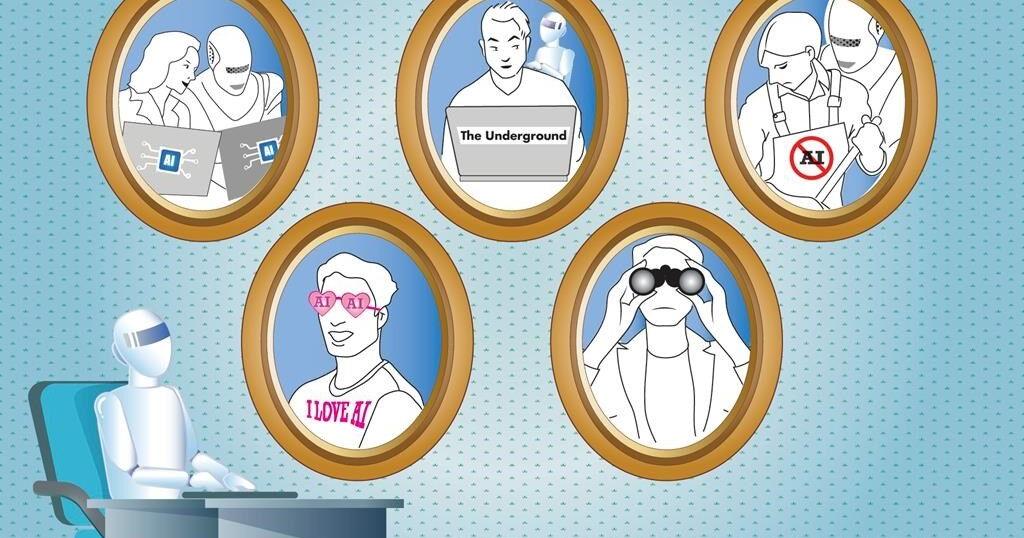![]()
![]() Source: Alex Dobie / Android Central
Source: Alex Dobie / Android Central
![]()
![]() Source: Alex Dobie / Android Central
Source: Alex Dobie / Android Central
Maybe I’m just getting older and having one of those “get off my lawn” moments, but in the intervening years since the iPhone X and Galaxy Note 9 were released and normalized $1,000+ phones, I have become progressively less and less excited about whizbang new features and running on the never-ending upgrade treadmill.
Don’t get me wrong, I still absolutely love following this stuff, and I get a rush from reading and writing about it all as much as the next tech geek. But when it comes to my own personal needs and purchasing decisions, I’ve been doing some thinking and re-evaluating. I’ve come to the conclusion as I enter middle age that I’m a middle-tier phone kind of guy. And you know what? I’m actually OK with that. This realization has caused me to take action this week and lead me to pre-order the Google Pixel 4a.

![]() Source: Alex Dobie / Android Central
Source: Alex Dobie / Android Central
At 44 (and a half) years old, I’m starting that stage of life affectionately referred to as “middle age.” I’ve got one kid starting college, another starting high school, a mortgage, three cars, retirement planning, etc. You get the idea. Unlike in my 20s and 30s, my financial obligations have started to get real. Well, in all honestly, they’ve been getting real for awhile, but I am noticing them now more than ever before.
Now more than ever before in the smartphone era, people are feeling the financial pinch and are just trying to survive.
But it’s not just me; lots of people are feeling the financial pinch right now. The global economy has taken a hit due to the current pandemic and ongoing societal issues resurfacing, and more and more people either don’t have as much disposable income to spend on super-premium phones. That, and they just can’t be bothered to care as much about that kind of stuff right now. You know, what with all the necessary survival coping they’re doing.
Not that long ago, if you wanted a phone with a high quality build, good camera(s), an excellent display, and any bonus features like water resistance or NFC, you had to go for the premium models (and I did, with gusto). But this is not the case anymore. Sure, you still often need to make compromises here and there, but by and large, you can find a good, affordable Android phone that might have cost you double, or triple in yesterday’s dollars for the same feature set.

![]() Source: Andrew Martonik / Android Central
Source: Andrew Martonik / Android Central
My move to the middle is not all about price; it’s about the available feature set as well. Many phones in the $350-$650 range have most, if not all, of the features that I care about anyway. Whether it’s the Pixel 4a, the OnePlus Nord (which isn’t available in the U.S.), the iPhone SE, or the TCL 10 Pro, there are more than a handful of phones in this price range that I’d happy with as my daily driver.
Well then, we have something you might be into @Jeramyutgw! Say hello to “Jeramy’s Moolah Maintainer”. #Pixel4a, starting at $349. https://t.co/1ZflT05Yyr pic.twitter.com/1E748XVRSY
— Made by Google (@madebygoogle) August 3, 2020
Even in spite of its low price, the Pixel 4a has nearly everything that I value in a smartphone anyway.
The Pixel 4a has 6GB of memory and 128GB of storage. It has the legendary Pixel camera system, that while perhaps not quite as good as the Pixel 4 before it, is still among the best Android camera phones available. It has a fast rear-fingerprint sensor that most people love, and it is one of the few phones at any price range that still ships with a 3.5mm headphone jack. You get NFC for contactless Google Pay, and surprisingly capable battery performance for such a “small” phone.
Sure, you don’t get all of the fun colors from previous Pixel phones, but you’re probably just going to put it in a case anyway. It also doesn’t have official water resistance or wireless charging. Still, if you accept that you can’t get everything you want at this price, I think those are fair tradeoffs to make.

![]() Source: Alex Dobie / Android Central
Source: Alex Dobie / Android Central
Intellectually, I understand why phone manufacturers keep pushing up the price of their premium phones. The cost of components has gone up, as has the cost of doing business in these crazy COVID times. Companies want to keep the margins they’ve become accustomed to, or better yet, to improve them. I get it.
That being said, it’s clear that good phones don’t have to cost as much as they do now. It’s good to see companies like Google, Apple, OnePlus, and Samsung realizing this, and making popular international mid-tier phones available here in the U.S. where I live, or designing bespoke new entries in this price range for a wider international audience.
After reading all of the Pixel 4a reviews and watching all of the great videos covering this new phone, I was among many who declared my interest in and intention to buy a Pixel 4a, and you know what? Google totally called me on it.
Since you said it’s all you personally need… Ball’s in your court, Jeramy.
— Made by Google (@madebygoogle) August 4, 2020
To that, all I can say is “Hey Google. Here you go—swish, dunk, home run, touchdown.”

 Source: Android Central
Source: Android Central
As soon as I receive my Pixel 4a, I’ll be looking forward to using it as my primary phone. I also will be eagerly watching this space over the next year to see who else can wow me with a great phone that doesn’t break the bank.
What about you? Are you going to be getting a Pixel 4a or similar mid-tier phone device of a flagship for your next phone?
An outstanding camera, and then some
The Pixel 3a was hailed as one of the best affordable phones of 2019, and for 2020, we have its successor in the form of the Pixel 4a. The camera is better than ever, performance is plenty fast, the battery is reliable, and there’s even a headphone jack. Assuming you’re a fan of smaller phones and don’t mind the boring design, the Pixel 4a is one of the best deals out there.
We may earn a commission for purchases using our links. Learn more.


Samsung has started rolling out the first software update for its Galaxy Watch 3. The update adds support for blood oxygen monitoring, VO2max, sleep scores, and more.


There are five stunning colors available for the Galaxy Note 20 series, but which one is the best? Here’s what some of our AC forum members have to say.


If you only focus on how much power is wasted you’re ignoring the most important parts.


The Pixel 4a is a great phone for an even greater price, but it isn’t the most flashy phone on the market. Thankfully, there are flashy, fashionable, and dependable cases out there you can grab to spice things up!

SAN FRANCISCO (AP) — Artificial intelligence‘s recent rise to the forefront of business has left most office workers wondering how often they should use the technology and whether a computer will eventually replace them.
Those were among the highlights of a recent study conducted by the workplace communications platform Slack. After conducting in-depth interviews with 5,000 desktop workers, Slack concluded there are five types of AI personalities in the workplace: “The Maximalist” who regularly uses AI on their jobs; “The Underground” who covertly uses AI; “The Rebel,” who abhors AI; “The Superfan” who is excited about AI but still hasn’t used it; and “The Observer” who is taking a wait-and-see approach.
Only 50% of the respondents fell under the Maximalist or Underground categories, posing a challenge for businesses that want their workers to embrace AI technology. The Associated Press recently discussed the excitement and tension surrounding AI at work with Christina Janzer, Slack’s senior vice president of research and analytics.
Q: What do you make about the wide range of perceptions about AI at work?
A: It shows people are experiencing AI in very different ways, so they have very different emotions about it. Understanding those emotions will help understand what is going to drive usage of AI. If people are feeling guilty or nervous about it, they are not going to use it. So we have to understand where people are, then point them toward learning to value this new technology.
Q: The Maximalist and The Underground both seem to be early adopters of AI at work, but what is different about their attitudes?
A: Maximalists are all in on AI. They are getting value out of it, they are excited about it, and they are actively sharing that they are using it, which is a really big driver for usage among others.
The Underground is the one that is really interesting to me because they are using it, but they are hiding it. There are different reasons for that. They are worried they are going to be seen as incompetent. They are worried that AI is going to be seen as cheating. And so with them, we have an opportunity to provide clear guidelines to help them know that AI usage is celebrated and encouraged. But right now they don’t have guidelines from their companies and they don’t feel particularly encouraged to use it.
Overall, there is more excitement about AI than not, so I think that’s great We just need to figure out how to harness that.
Q: What about the 19% of workers who fell under the Rebel description in Slack’s study?
A: Rebels tend to be women, which is really interesting. Three out of five rebels are women, which I obviously don’t like to see. Also, rebels tend to be older. At a high level, men are adopting the technology at higher rates than women.
Q: Why do you think more women than men are resisting AI?
A: Women are more likely to see AI as a threat, more likely to worry that AI is going to take over their jobs. To me, that points to women not feeling as trusted in the workplace as men do. If you feel trusted by your manager, you are more likely to experiment with AI. Women are reluctant to adopt a technology that might be seen as a replacement for them whereas men may have more confidence that isn’t going to happen because they feel more trusted.
Q: What are some of the things employers should be doing if they want their workers to embrace AI on the job?
A: We are seeing three out of five desk workers don’t even have clear guidelines with AI, because their companies just aren’t telling them anything, so that’s a huge opportunity.
Another opportunity to encourage AI usage in the open. If we can create a culture where it’s celebrated, where people can see the way people are using it, then they can know that it’s accepted and celebrated. Then they can be inspired.
The third thing is we have to create a culture of experimentation where people feel comfortable trying it out, testing it, getting comfortable with it because a lot of people just don’t know where to start. The reality is you can start small, you don’t have to completely change your job. Having AI write an email or summarize content is a great place to start so you can start to understand what this technology can do.
Q: Do you think the fears about people losing their jobs because of AI are warranted?
A: People with AI are going to replace people without AI.
The Canadian Press. All rights reserved.

WASHINGTON (AP) — The Biden administration said Tuesday that it would provide up to $325 million to Hemlock Semiconductor for a new factory, a move that could help give Democrats a political edge in the swing state of Michigan ahead of election day.
The funding would support 180 manufacturing jobs in Saginaw County, where Republicans and Democrats were neck-in-neck for the past two presidential elections. There would also be construction jobs tied to the factory that would produce hyper-pure polysilicon, a building block for electronics and solar panels, among other technologies.
Commerce Secretary Gina Raimondo said on a call with reporters that the funding came from the CHIPS and Science Act, which President Joe Biden signed into law in 2022. It’s part of a broader industrial strategy that the campaign of Vice President Kamala Harris, the Democratic nominee, supports, while Republican nominee Donald Trump, the former president, sees tariff hikes and income tax cuts as better to support manufacturing.
“What we’ve been able to do with the CHIPS Act is not just build a few new factories, but fundamentally revitalize the semiconductor ecosystem in our country with American workers,” Raimondo said. “All of this is because of the vision of the Biden-Harris administration.”
A senior administration official said the timing of the announcement reflected the negotiating process for reaching terms on the grant, rather than any political considerations. The official insisted on anonymity to discuss the process.
After site work, Hemlock Semiconductor plans to begin construction in 2026 and then start production in 2028, the official said.
Running in 2016, Trump narrowly won Saginaw County and Michigan as a whole. But in 2020 against Biden, both Saginaw County and Michigan flipped to the Democrats.
The Canadian Press. All rights reserved.

Although no one likes a know-it-all, they dominate the Internet.
The Internet began as a vast repository of information. It quickly became a breeding ground for self-proclaimed experts seeking what most people desire: recognition and money.
Today, anyone with an Internet connection and some typing skills can position themselves, regardless of their education or experience, as a subject matter expert (SME). From relationship advice, career coaching, and health and nutrition tips to citizen journalists practicing pseudo-journalism, the Internet is awash with individuals—Internet talking heads—sharing their “insights,” which are, in large part, essentially educated guesses without the education or experience.
The Internet has become a 24/7/365 sitcom where armchair experts think they’re the star.
Not long ago, years, sometimes decades, of dedicated work and acquiring education in one’s field was once required to be recognized as an expert. The knowledge and opinions of doctors, scientists, historians, et al. were respected due to their education and experience. Today, a social media account and a knack for hyperbole are all it takes to present oneself as an “expert” to achieve Internet fame that can be monetized.
On the Internet, nearly every piece of content is self-serving in some way.
The line between actual expertise and self-professed knowledge has become blurry as an out-of-focus selfie. Inadvertently, social media platforms have created an informal degree program where likes and shares are equivalent to degrees. After reading selective articles, they’ve found via and watching some TikTok videos, a person can post a video claiming they’re an herbal medicine expert. Their new “knowledge,” which their followers will absorb, claims that Panda dung tea—one of the most expensive teas in the world and isn’t what its name implies—cures everything from hypertension to existential crisis. Meanwhile, registered dietitians are shaking their heads, wondering how to compete against all the misinformation their clients are exposed to.
More disturbing are individuals obsessed with evangelizing their beliefs or conspiracy theories. These people write in-depth blog posts, such as Elvis Is Alive and the Moon Landings Were Staged, with links to obscure YouTube videos, websites, social media accounts, and blogs. Regardless of your beliefs, someone or a group on the Internet shares them, thus confirming your beliefs.
Misinformation is the Internet’s currency used to get likes, shares, and engagement; thus, it often spreads like a cosmic joke. Consider the prevalence of clickbait headlines:
Titles that make outrageous claims are how the content creator gets reads and views, which generates revenue via affiliate marketing, product placement, and pay-per-click (PPC) ads. Clickbait headlines are how you end up watching a TikTok video by a purported nutrition expert adamantly asserting you can lose belly fat while you sleep by drinking, for 14 consecutive days, a concoction of raw eggs, cinnamon, and apple cider vinegar 15 minutes before going to bed.
Our constant search for answers that’ll explain our convoluted world and our desire for shortcuts to success is how Internet talking heads achieve influencer status. Because we tend to seek low-hanging fruits, we listen to those with little experience or knowledge of the topics they discuss yet are astute enough to know what most people want to hear.
There’s a trend, more disturbing than spreading misinformation, that needs to be called out: individuals who’ve never achieved significant wealth or traded stocks giving how-to-make-easy-money advice, the appeal of which is undeniable. Several people I know have lost substantial money by following the “advice” of Internet talking heads.
Anyone on social media claiming to have a foolproof money-making strategy is lying. They wouldn’t be peddling their money-making strategy if they could make easy money.
Successful people tend to be secretive.
Social media companies design their respective algorithms to serve their advertisers—their source of revenue—interest; hence, content from Internet talking heads appears most prominent in your feeds. When a video of a self-professed expert goes viral, likely because it pressed an emotional button, the more people see it, the more engagement it receives, such as likes, shares and comments, creating a cycle akin to a tornado.
Imagine scrolling through your TikTok feed and stumbling upon a “scientist” who claims they can predict the weather using only aluminum foil, copper wire, sea salt and baking soda. You chuckle, but you notice his video got over 7,000 likes, has been shared over 600 times and received over 400 comments. You think to yourself, “Maybe this guy is onto something.” What started as a quest to achieve Internet fame evolved into an Internet-wide belief that weather forecasting can be as easy as DIY crafts.
Since anyone can call themselves “an expert,” you must cultivate critical thinking skills to distinguish genuine expertise from self-professed experts’ self-promoting nonsense. While the absurdity of the Internet can be entertaining, misinformation has serious consequences. The next time you read a headline that sounds too good to be true, it’s probably an Internet talking head making an educated guess; without the education seeking Internet fame, they can monetize.
______________________________________________________________
Nick Kossovan, a self-described connoisseur of human psychology, writes about what’s
on his mind from Toronto. You can follow Nick on Twitter and Instagram @NKossovan.


Forward Jade Kovacevic is the first player signing announced by Northern Super League


What Difference Will You Make to an Employer?


Supply shortage for Ontario home care, palliative patients unacceptable: minister


Harris raises $633 million in the third quarter but spends heavily in final push


Carbon monoxide poisoning suspected in deaths of three found in car in Quebec’s Gaspé


A look at Susan Holt, Liberal premier-designate of New Brunswick


Duke’s Cooper Flagg makes preseason AP All-America team as ACC, Big 12, SEC each place 2 players


Jays reliever Green and Canadian slugger O’Neill nominated for comeback player award